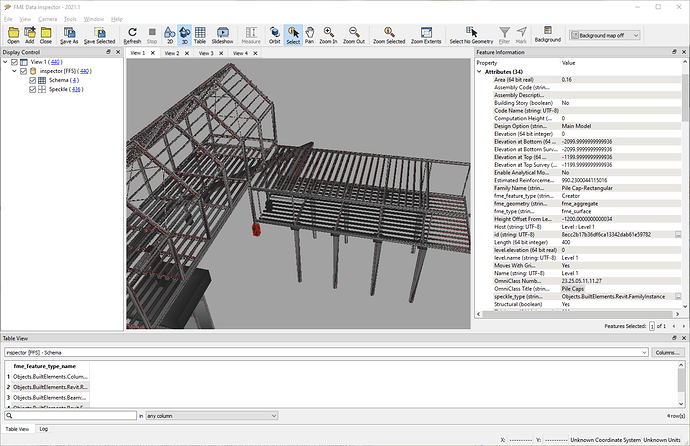FME has a basic premise of converting anything into anything but having started in GIS/CAD.
You can run locally or publish workbooks to run as stored procedures to their Cloud Servers (or your own). As such you can set up a “drop-box” to upload a file and choreograph single or multiple transformations to pop out the other end. My “vision” was for speckle to be one of those endpoints.
Effectively as a specialised data store and for immediate consumption by whatever clients you have set up.
I’m a user because I don’t often author anything myself but spend a lot of time and energy converting, analysing and enriching datasets. Some of the recent case-studies from the retreat are a similar approach. Respond to inputs and publish augmentations back to the source.
There is a Revit reader that works well and I have pipelines in mind that mean I never have to open Revit to get the answers I’m looking for. Also, I then consume the data I have preselected to be worth keeping. Not using Revit first-person also allows for hands-off automation of analysis streams.
My first workflow, I’m interested in linking FME with Speckle right now, currently involves BigQuery with my customisations (UDFs)/Cloud Storage/Firestore.
BQ is not yet amazing at geometric analysis (hence the UDFs), but fantastic as a back-end. However any time a new use-0case comes for it, its incumbent on me to maintain a consumer… starts to sound like the Speckle ecosystem.
My intent for Speckle as a user is that Speckle will allow more consumers to access the Project dataset at no technical overhead to me.
maybe evolving sometime to:
Who knows? Ultimately FME (albeit not opensource) can be used by many users as the uber-connector for Speckle
As I’ve been speaking to Safe, their plugin architecture for new connectors (Readers//Writers) can be C++/Python where oftentimes a UI + Python Script is all it takes to handle the ingestion and egress of data. The trick is to have a good knowledge of the API/Scheme for the target.
Very happy to work with / kick something off for this beyond just a shout out to the ether on Twitter.
If Speckle is the democratisation of AEC data then FME is the diplomat.
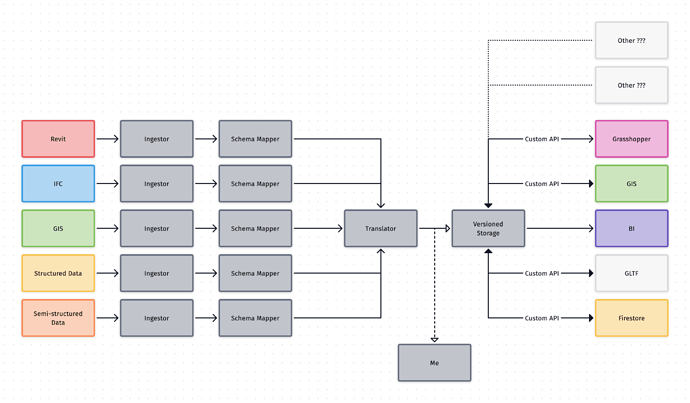
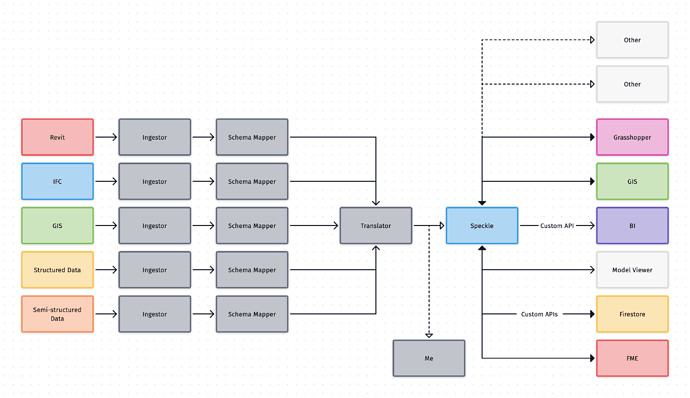
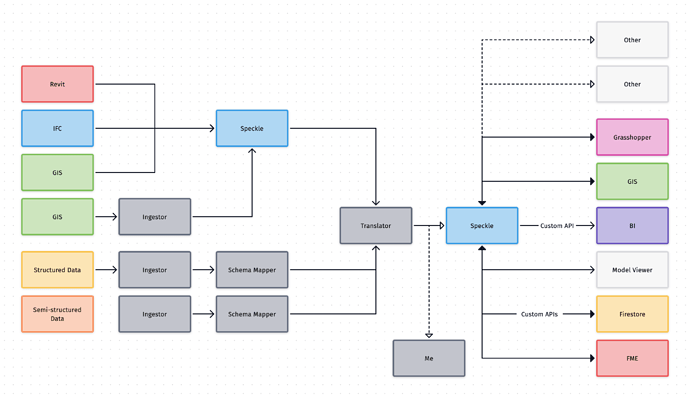


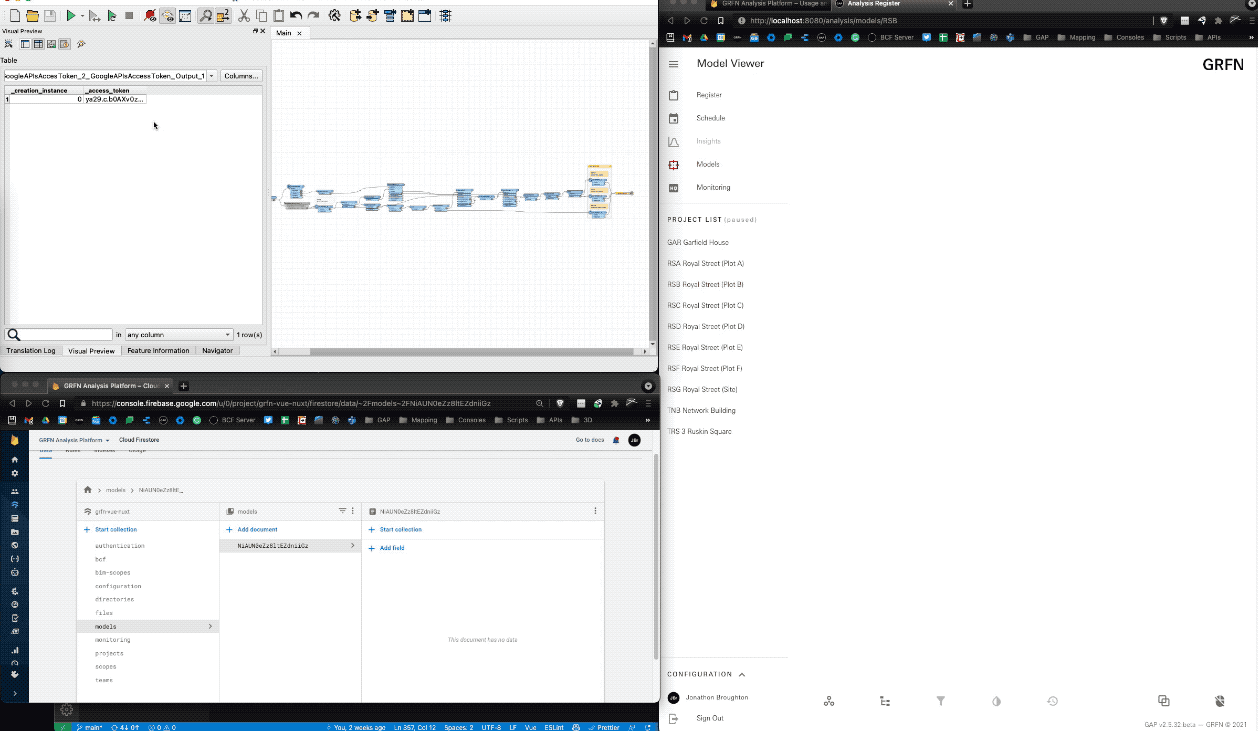
 in!
in! 

